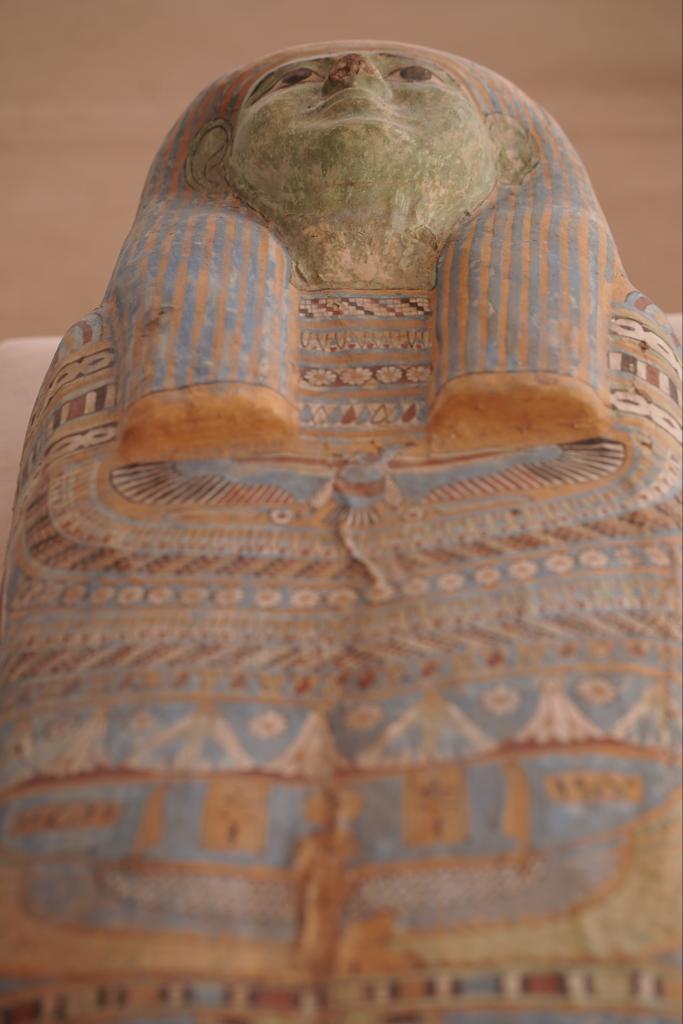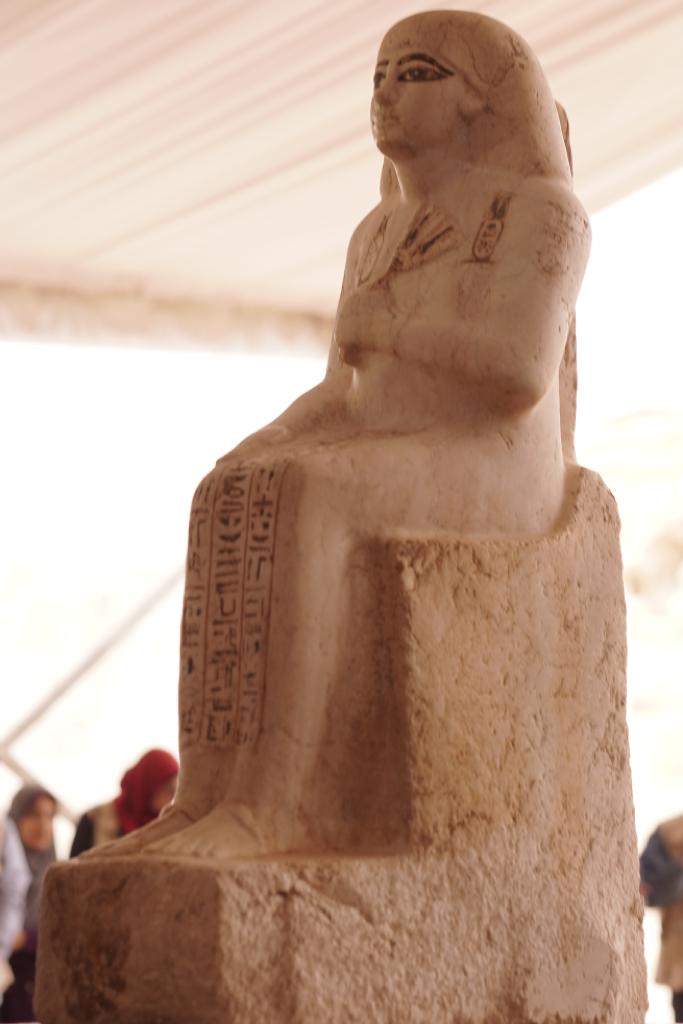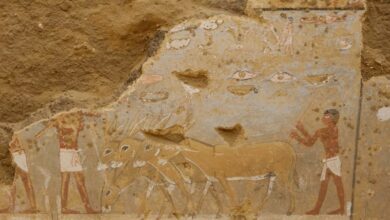
An Egyptian archaeological mission, led by Secretary General of the Supreme Council of Antiquities Mostafa Waziry, working at the Saqqara necropolis for its sixth year on has discovered two of the largest ever embalming workshops for human and animal mummies.
The team also found two tombs and a large array of artifacts.

In a conference announcing the finding, Minister of Tourism and Antiquities Ahmed Issa held a speech where he expressed his pride at being in Saqqara, which houses the oldest stone building in history – the Step Pyramid of Djoser – and a myriad of other notable tombs and multiple secrets.
“Today we unveil one of those secrets, announce the discovery of two large embalming workshops for humans and animals as well as two ancient Egyptian tombs and other artifacts exhibited here on site,” the minister said.
He also praised the excavation team, Waziry and the Supreme Council of Antiquities for their tireless work in uncovering the mysteries of Egypt’s ancient heritage.
“I witnessed their hard work during my visit last month to the necropolis of the sacred animals (Bubastian) to check upon the work being achieved and met the working members of the mission who revealed this new discovery,” he added.
These discoveries continue to help promote Egypt in the global map as an archaeological and touristic spot.
“I assure you that Egypt, especially the archaeological site of Saqqara did not yet reveal its secrets and there are many more to come,” Issa assured.

Inside the embalming rooms
One of the workshops used for human mummies features a rectangular shape. It is divided into several rooms equipped with stony slabs measuring two meters in length, where corpses were laid for embalming.
Each slab measures two meters long and 50 cm wide.
The mission found various canopic jars used in mummification, alongside ritual vessels and embalming instruments.
The workshop for animal mummies featured a similar layout, made out of mud with stone floors. The team discovered five slabs of a different shape than the ones in the human embalming room, used to mummify animals considered sacred to the ancient Egyptians.

Within the tombs
The general director for the Saqqara archaeological site Sabri Farag said that the first tomb uncovered was revealed to belong to a top fifth dynasty official identified as “Ne Hesut Ba”.
He lived sometime in 2400BC and was a head scribe and priest of the gods Horus and Maat.
The other tomb belonged to a Qadish Priest named “Men Kheber”, who lived in the 18th Dynasty (1400BC).
Another director for the Saqqara site, Mohamed Youssef, explained that the the Old Kingdom tomb features a stone painted façade which bears the name of the deceased and his wife.

Within the tomb, inscriptions show scenes of daily life, hunting and war.
The New Kingdom tomb is carved in rock with a door and lintel also decorated with the names of the deceased and his wife.
Inscriptions inside show the deceased in various positions before offering tables.
Further within is a niche hosting a one-meter-long alabaster statue of the tomb’s owner inscribed in blue hieroglyphics, wearing a wig, a lotus flower in hand and a long dress.
Wooden sculptures of Nesu Henu and his wife were amongst the statues uncovered, alongside ushabti figurines and a painted coffin dating to the third intermediate period.




